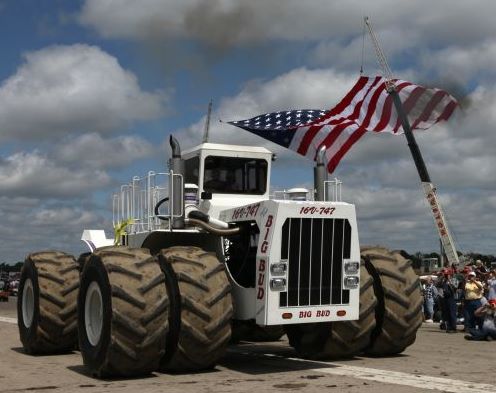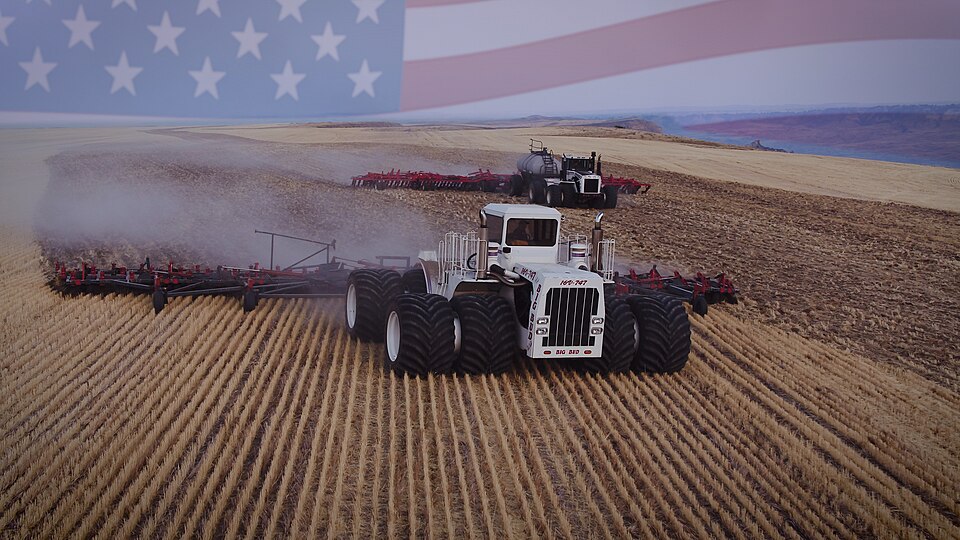There’s something almost romantic about a machine so colossal and so undeniably powerful that it commands attention the moment it crests the horizon. The Big Bud tractor, especially the famous 747, has earned that kind of timeless respect. Its story is one of ambition, innovation, and sheer staying power.
A Genesis in the Big Sky Country
The Big Bud saga began in the late 1960s in Havre, Montana. Early 250-series models were rolling out by 1968, purchased by the likes of Leonard M. Semenza to tackle the vast acreage of his northern Montana farm. But it was in 1977 that the tractor universe truly shook. The Big Bud 747, custom-built with a Detroit Diesel 16V92T engine, emerged with a staggering 760 horsepower. Over time it was upgraded to a mind-blowing 1,100 horsepower. Dubbed “the world’s largest farm tractor,” the 747 became a living legend.
Why It Matters (Still)
What sets Big Bud apart is not just strength. It is durability and sensibility. These machines are simple in design, with an iconic “gen pack” for engine and transmission that can be swapped out in under four hours. Even today, several hundred Big Bud tractors remain in operation, plowing, ripping, and hauling in fields across farms that value reliability. That rugged straightforwardness makes repair and upgrades possible even decades later.
The End of the Line and Why It Didn’t Mean the End of the Legacy
Big Bud tractors were never mass-produced. They were bespoke, built for scale, and their parts were not readily available. The death knell came in 2000 when United Tire Company of Canada, the maker of Big Bud’s custom eight-foot tires, went bankrupt. Without fresh tires these giants were rooted in place. Although the 747 did not immediately retire, that setback, combined with the cost of production and upkeep, led to its retirement by July 2009. It has since become more of an exhibit than a workhorse.

Still Rolling: Restoration, Upgrades and Fanfare
Fate, however, is not limited to business closures. The legend lives on, not just in museums, but in lives rekindled by restoration. Northern operators like the Williams Brothers and, more recently, the internet-famous Welker Farms of north-central Montana have taken to reviving Big Buds to full glory.
Welker Farms’ rebuilt Big Bud was recently outfitted with the “world’s largest agricultural tires,” Titan’s LSW 1,430 R46 OptiTrack super single tires. These measure an impressive 83 inches in diameter, replacing the duals it once wore, which measured 74 to 76 inches. These super singles not only look imposing, they improve flotation, minimize compaction, and keep mud from clogging between dual tires. They offer performance similar to track systems in muddy fields.
The team has also given the iron giant a fresh heart: a newly rebuilt motor pushing it to nearly 700 horsepower, bringing its field-ready might back to life.
A Star at the Farm Progress Show
Crowds are already anticipating the sight of Welker Farms’ Big Bud at Titan Tire’s booth during the 2025 Farm Progress Show in Decatur, Illinois, August 26–28. Painted white and standing in the open-air fields, it is more than nostalgia. It is a statement. As Scott Sloan, Titan’s LSW product manager, puts it, “There are always red fans and green fans, but everybody’s a Big Bud fan. It’s like the Switzerland of the tractor world when it comes to that.”
The Welker family, not just the machine, will be present. They will answer questions and bask in the adoration of enthusiasts before the tractor returns to Montana for more fieldwork.
Why Big Bud Still Matters to Farmers and Fans Alike
There are tractors with flash, and there are tractors that inspire. Big Bud falls squarely in the latter category. Its legacy is not just about size or horsepower. It is about the human ambition to do more, better, and bigger. It is about how rugged engineering meets real-world need. And with restorations like Welker Farms’ and the roar of massive tires spinning again in open fields, it proves that some legends refuse to rust away.
This is not just a throwback. It is a testament to endurance, revival, and the stubborn pride of the tractor world.


Leave a Reply